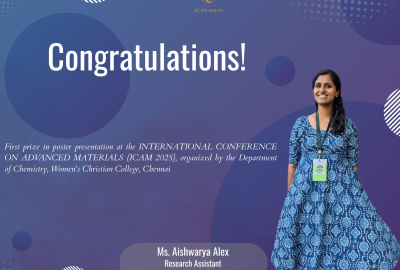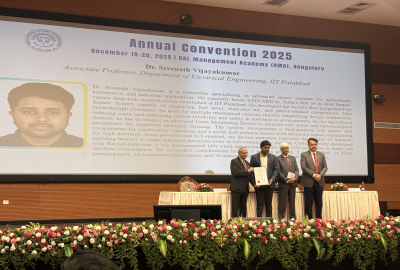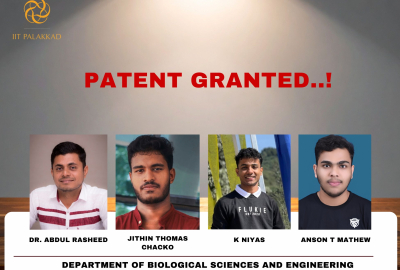
Day 1 sessions of Science Quest-II & CRYSTAL set the pace
The plenary session of the 10-day residential science camp for school students at IIT Palakkad, got off to an invigorating start on May 4. The plenary had two attention-grabbing scientists take the floor. Prof. Arnab Bhattacharya (TIFR, Mumbai) spoke on the topic ‘The Wonderful Lab Called Home (in the Pandemic, and Beyond!)’. The second speaker, Mr. Arjun Prasad, scientist at KSCSTE addressed the topic ‘How important is it to Observe’?
Prof. Arnab Bhattacharya began his extremely interactive session by posing the question ‘What is science’. Appreciating student responses like ‘The study of nature’, ‘Finding out about the beautiful world around us’ , he highlighted that science was both about studying what was inside a cell or about a planet in a universe far away. He phrased it as ‘Efforts to try and understand the world’ or a ‘Systematic way of understanding the world’. He maintained that one could enjoy and have fun with science.
He highlighted the goal of the residential camp as developing the capacity for critical thinking and love for math and science. To this end, it was designed for interaction between researchers and students, and for interactive, hands-on experiences.
Drawing on his own initiatives for science popularisation and outreach, and to further science and innovation as a Science Communicator, ‘Chai and why’, he said “It is possible to do lots of fun science. The world’s best lab is your home. Fantastic experiments are possible in the bathroom/kitchen. Nowadays we talk of STEM but it should be STEAM. The Arts are also important. Creativity is vital to science.” He then proceeded to share from ‘Chai and Why’s engagement with experiments in resource constrained environments, on every 1st and 3rd Sunday in rural Maharashtra.
He gave the students the slogan: If you want to be a WISE person, Then you must be a WHYs person. Highlighting that ‘Quest’ in the very name of the camp, Science Quest, required that students ask why, ask questions, he proceeded to do a number or experiments with things as diverse but commonplace as a sheet of paper, a bit of string, spoon and eraser, two plastic bottles etc. The links to all these and more are available online at Tinyurl.com/sheetofpaper, Tinyurl.com/simpleexperiments, Tinyurl.com/ bitofstring.
He also created a model of the Solar system with distances to scale. A melon with circumference of 30cm (D=10cm) featured as the sun, and the earth was a mustard seed. He ended by enthusing students to use any excuse to talk about science. Citing examples of his own work studying voters-ink at election time and Covid mask decontamination experiments done at home with an idli cooker, he pointed out that it makes for publishable research as well.
Mr. Arjun Prasad, scientist at KSCSTE addressed the topic ‘How important is it to Observe’? Drawing upon the previous session, he began by gathering student’s reflections about it. Besides appreciating the fun and interactive approach, students noted that ‘There is science in small things’ and the ‘Science can be simplified, not made to look complex’. Expanding on the theme that science is all around us, and in simple things, Mr Arjun Prasad highlighted the difference between seeing and observing, how observation is inspired by curiosity, and how it entails enjoying the moment and being attentive.
Referring to the ‘Art of observation’, he asked students to reflect on the difference between Sherlock Homes and themselves. He also pointed out that the earth is 3.8billion years old, and hence nature has learnt what works, and what is appropriate. Explaining further that life has learnt to adapt to various environments like deserts, poles and deep sea, he introduced the importance of the concept of Biomimicry or learning by mimicking life around us. Inventions need not emanate from a problem. Just awareness and curiosity, can inform discovery. He showed how, with the example of the product ‘Velcro’. Using interesting anecdotes and attractive visuals he shared other examples like bullet train technology improvement, and dew harvesting technologies being developed in arid regions, all inspired by learning from nature, whether from Kingfishers or Darkling beetles in the Namib desert. Drawing attention to the fact that successful scientists have often been people with wide interests, he concluded that “The Future of Technology is all around us”.






